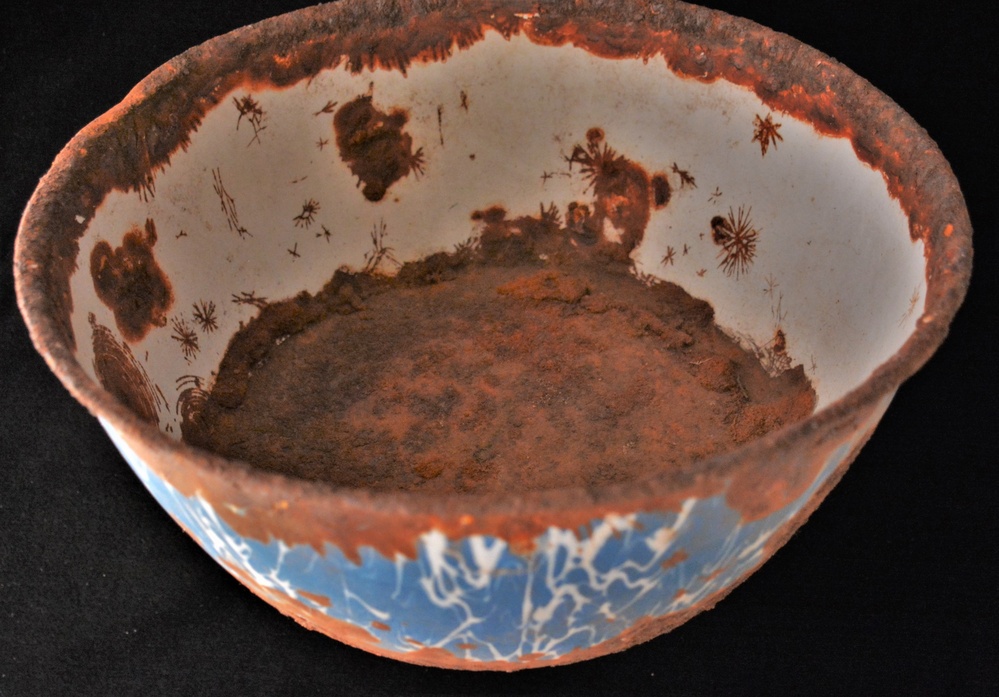
Shown is an enamelware bowl on Oct. 28, 2015, that was found in an archaeological dig — also in 2015. Enamelware originated in the early 19th century — developed at least in part to combat the taste of metal or rust which came from cooking with metal pots common at the time. The process for making enamelware involved coating the metal surface of a pot or pan with an enamel glaze, and then firing (heating at a high temperature) the vessel in a kiln. Initially, only the interior surfaces of cookware were enameled, because it made scouring those surfaces faster and easier, and reduced the likelihood of a metal or rust taste transferring to cooked food. (Photo courtesy of the Colorado State University Center for the Environmental Management of Military Lands supporting Fort McCoy)
| Date Taken: | 10.28.2015 |
| Date Posted: | 06.21.2022 10:21 |
| Photo ID: | 7281354 |
| VIRIN: | 151028-A-A4608-137 |
| Resolution: | 3417x2383 |
| Size: | 1.38 MB |
| Location: | FORT MCCOY, WISCONSIN, US |
| Web Views: | 13 |
| Downloads: | 1 |

This work, Fort McCoy ArtiFACT: Enamelware bowl, must comply with the restrictions shown on https://www.dvidshub.net/about/copyright.